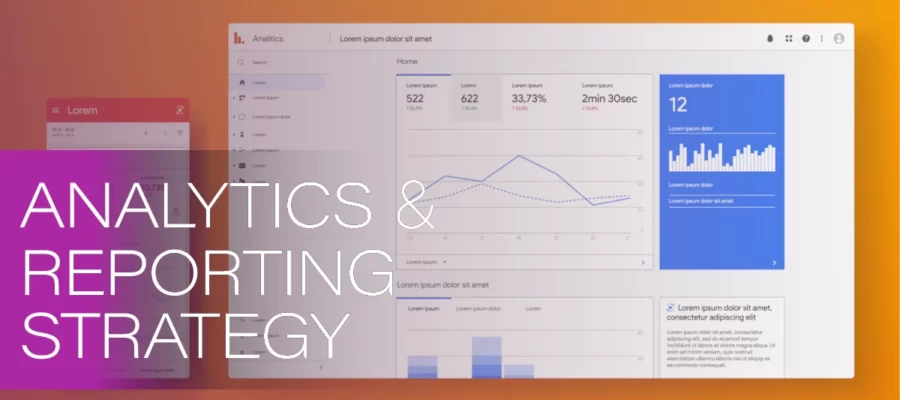Let’s face it, migrating to Google Analytics 4 (GA4) can feel like a bit of a mixed bag. It’s the shiny new candy store in town, packed full of sweet features and delicious opportunities for data analysis. However, all good things have limitations, and GA4’s may hinder deeper analysis. While GA4 (free) is a great starting point, some businesses may require more advanced tools to truly unlock their data’s full potential. That’s where Google Analytics 360 (GA360) comes in. But before you jump to an upgrade, the burning question you should ask yourself is, “Am I using GA4 to its fullest potential?”
Get ready, as we are here to help you navigate the sugar rush and ensure you get the most out of GA4. We are going to explore potential roadblocks and offer strategies to optimize your free-tier experience. We’ll also explore advanced techniques to unlock GA4’s full potential, ensuring you get the most value from your analytics platform.
Optimize for the Sweetest Results from GA4 (Free Tier)
Google Analytics 4 might not offer every bell and whistle; however, it still packs a powerful punch for data analysis. Here’s how to sprinkle some sweetness and optimize your experience:
Extracting Value from the Basics
GA4 shines with its core functionalities that provide gummy-bear clear insights into user behavior. These include:
- User Behavior Analysis: Gain a clear understanding of how users navigate your website or app. Track page views, scroll depth, time spent on specific pages, and user journeys to identify areas for improvement.
- Event Tracking: Measure specific user interactions beyond page views. This can include button clicks, form submissions, video engagement, or any custom event relevant to your business goals (e.g., product add-to-carts, white paper downloads).
- Basic Reporting: Leverage the built-in reports to analyze key metrics like user acquisition, engagement, and conversions. These reports provide a foundation for understanding user behavior and campaign performance.
Sweeten Your Data Visualization with Looker Studio
Looker Studio (formerly Data Studio) acts as your powerful sidekick for GA4. This free data visualization tool lets you transform raw data into candy-coated dashboards and comprehensive reports. Especially if you primarily use Google products, Looker Studio offers a seamless way to connect your GA4 data with other Google tools like Google Ads or Google Sheets. No need to upgrade to GA360 for basic visualizations! Leverage Looker Studio to craft compelling data stories that inform strategic decision-making, ensuring your insights are always clear and insightful.
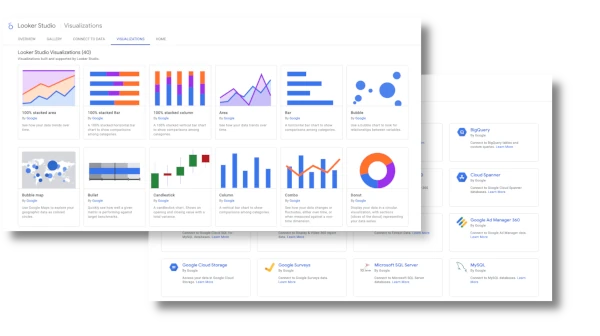
Note: The free tier of Looker Studio has limitations when it comes to connecting to data sources outside the Google ecosystem such as Shopify, LinkedIn Ads, and Facebook Ads.
Unlock the Power of Customization
GA4 empowers you to create custom user properties and events, the secret sprinkles that make your data analysis recipe unique and oh-so-effective!
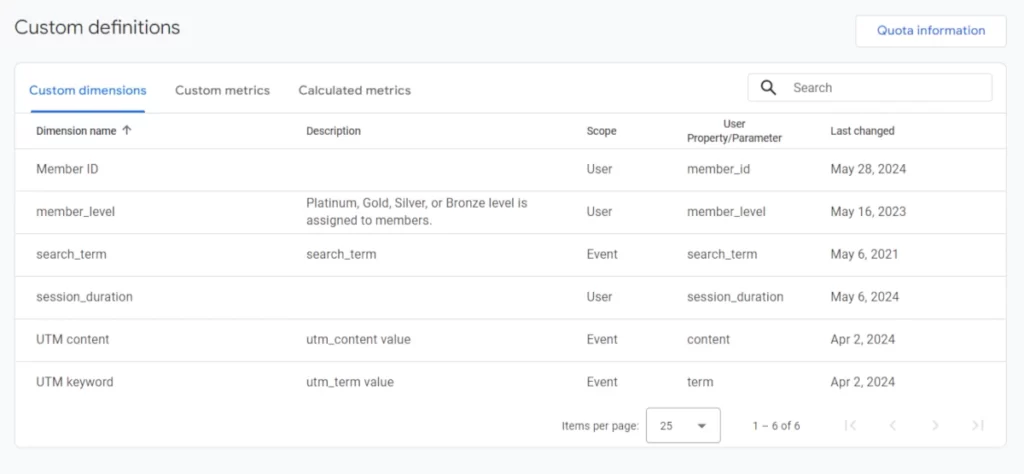
- Custom User Properties: Go beyond basic demographics and define user attributes specific to your audience. This could be purchasing history, loyalty program membership, or any relevant data point. With custom user properties, you can segment your audience with laser focus, just like separating your gummy bears by color for a targeted marketing mix. For example, we helped an e-commerce client define a custom user property for “VIP Customer” status. This allowed them to create targeted campaigns with exclusive offers that boosted customer engagement and loyalty.
- Custom Events: Track specific user interactions beyond the standard set. This could be anything from video completions to specific button clicks on a product page. With custom events, you gain a deeper understanding of user behavior and can optimize your content and user experience for better results. Imagine tracking when users reach the bottom of your blog post, the cherry on top of user engagement! We helped a client in the fitness industry track custom events for specific workout completions. This data allowed them to personalize workout recommendations and improve user retention.
By leveraging these features strategically, you can extract valuable insights from your data and make data-driven decisions that drive results.
Beyond the Basics: Advanced Techniques of GA4
Google Analytics 4 isn’t just about utilizing the basic core functionalities. Here are some advanced techniques to unleash the sugar within your data:
Uncover Hidden Gems with Explorations

The exploration tool is a powerful asset for uncovering user journey insights and building custom reports. It allows you to visualize user behavior across different dimensions and segments, helping you identify trends for sweet optimization opportunities. We’re experts at crafting complex explorations, giving you a microscopic view of user behavior to refine your marketing strategies.
Expand Your Analysis Horizon with Data Exports
While GA4 has limitations on data storage and reporting, you can still export your data to external tools like Google Sheets for further manipulation and analysis. Think of it like taking your favorite candy bar and creating a custom candy creation in Google Sheets! Perform calculations, create dazzling visualizations, and unlock a deeper understanding of your data. Our team is well-versed in working with exported GA4 data. We can help you transform raw data into actionable insights and create data-driven recommendations for your business.
Master the Art of Campaign Tracking with UTM Parameters
UTM parameters are essential for understanding where your website traffic originates from, and GA4 allows you to leverage them for campaign tracking. Here’s a list of the five UTM tracking parameters and their meanings:
- utm_source: This parameter identifies the website that referred the traffic to your site. Examples include “Google,” “Facebook,” or the name of a specific newsletter platform.
- utm_medium: This parameter specifies the marketing channel that delivered the traffic. Examples include “organic,” “CPC” (cost-per-click), or “email.”
- utm_campaign: This parameter identifies a specific marketing campaign that the traffic originated from. This allows you to differentiate between different campaigns running on the same platform (e.g., “summer sale” vs. “back-to-school”).
- utm_term: This parameter specifies the keyword or search term used to find your ad or content. This is particularly relevant for paid search advertising campaigns.
- utm_content: This parameter allows you to differentiate between different versions of the same ad or content. For example, you could use it to track the performance of different ad variations within a single campaign.
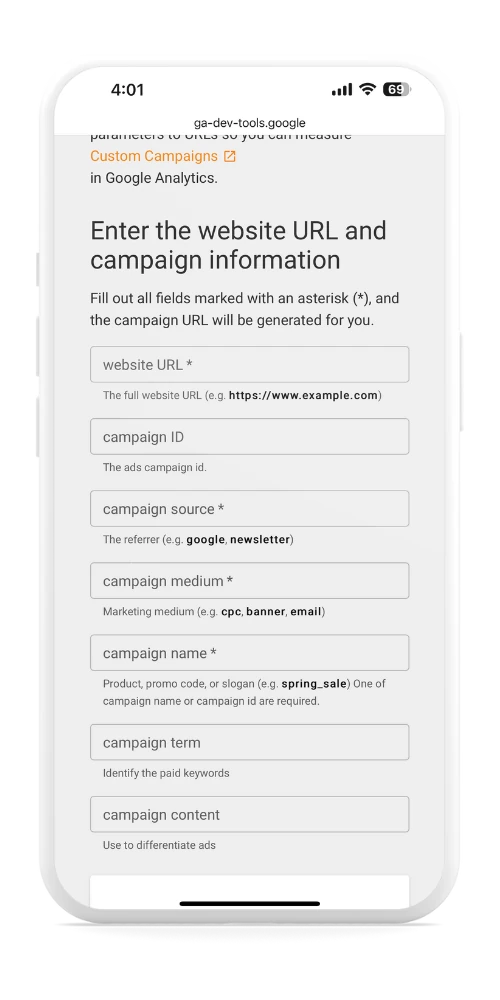
By properly tagging your links with UTM parameters, you can gain valuable insights into which campaigns drive the most delicious traffic, conversions, and revenue. We’ve helped numerous clients implement successful UTM parameter strategies, allowing them to measure campaign effectiveness and optimize their marketing spend. Guess what? We even use tracking URLs for ourselves!
The Sour Side: Understanding GA4’s Limitations
While GA4 packs a punch, it’s important to be aware of a few tart limitations that might affect your data analysis. Here’s a breakdown to help you navigate these areas:
Short-Term Data Retention
GA4 offers a data retention period of 14 months for user-level and event-level data. This can be a sweet treat for businesses with short-term goals or immediate analytical needs as it allows you to analyze trends and user behavior within that timeframe. But for businesses craving insights on long-term objectives like seasonal trends, or complex user journeys that unfold over an extended timeframe, this timeframe might feel a bit short. In these cases, understanding the nuances of this limitation is crucial:
- Accessing Data Beyond 14 Months: While raw data gets automatically deleted after 14 months, you can still access aggregated and custom reports containing data older than the threshold. This can be helpful for high-level trend analysis.
- Explorations and Detailed Analysis: Explorations reports, a powerful feature for in-depth analysis, are limited to the 14-month window. This means you cannot explore granular user behavior for historical data beyond that timeframe.
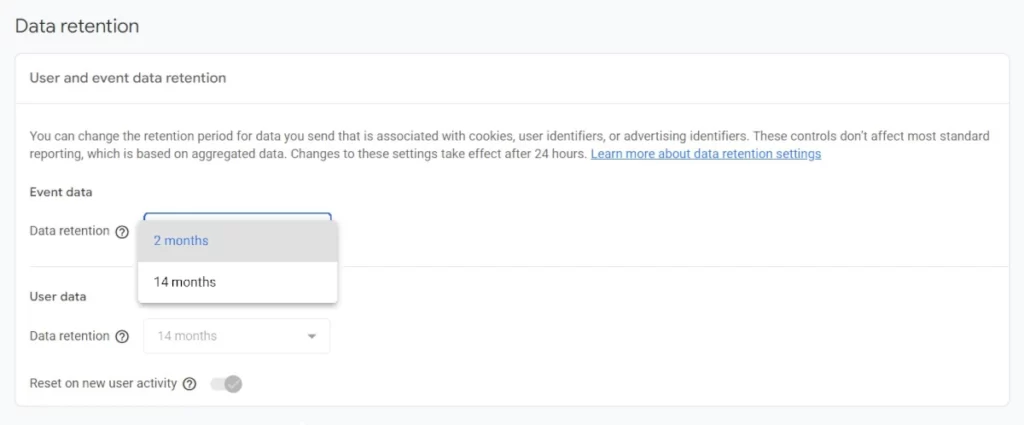
Note: The default data retention set by GA4 is 2 months and will have to be changed to 14 months in the configuration settings.
Getting Around Data Retention Limitations
If you require access to historical data for more comprehensive analysis, there are two options. Google BigQuery, a data warehouse service offered by Google Cloud Platform, has native integration with GA4. By linking your GA4 property to BigQuery, you can export your data and store it for longer periods. However, there are some considerations if you choose to use BigQuery:
- Cost: It’s important to note that the free tier of BigQuery offers 10 GB of storage and 1 TB of data processing per month. This can be a viable option for businesses with smaller datasets. However, for larger datasets or extensive historical data needs, exceeding the free tier limits might incur additional costs. Carefully evaluate your data volume and analysis needs before choosing this route. Upgrading to a paid BigQuery plan might be necessary for larger datasets or complex analyses.
- Technical Expertise: Setting up and managing data in BigQuery might require some technical expertise. Consider your team’s capabilities or the need for external support. For businesses without in-house data expertise, partnering with a company like ours can help you leverage BigQuery effectively and unlock the full potential of your GA4 data.
Businesses with a strong focus on long-term trend analysis may want to consider upgrading to GA360 as it is similar to a premium candy shop! In fact, it provides extended data retention periods and removes limitations on Explorations reports. This allows you to access historical data for a much longer timeframe and perform complex analysis on your entire dataset. Additionally, GA360 offers seamless integration with BigQuery, allowing for even more robust data storage and analysis capabilities.
Limited Customization Options
Yes, GA4 offers some sweet features for data exploration, but it’s important to keep in mind that it might not have all the sprinkles you crave for advanced customization. Here’s a breakdown of the key areas to consider:
- Limited Dashboard Customization: While you can create dashboards in the free tier, the options might not be sufficient for highly customized visualizations or complex data sets. This could restrict your ability to tailor your analytics platform to your specific needs.
- Event-Scoped Custom Dimensions & Metrics: GA4 allows you to create a limited number of event-scoped custom dimensions (50) and metrics (50). These are essential for capturing specific details about your events and gaining a more granular view of user behavior. However, the restrictions on the number of elements might hinder your ability to track all the crucial data points relevant to your business goals. For instance, an e-commerce store might benefit from tracking custom dimensions like product category, brand, or coupon code used. With limited custom elements, they might not be able to capture all these details.
Upgrading to a paid option like GA360 unlocks significantly more customization capabilities, including removing the limit on custom elements. However, by understanding the free tier’s limitations and working with a team like ours, you can still extract valuable data and insights to inform your marketing strategies. Better yet, you can still have a scrumptious data spread without the hefty price tag of GA360!
Attribution Modeling Complexities
Understanding which touchpoints lead to conversions is like untangling a giant candy necklace – sweet, but complex! While GA4 offers some basic attribution models, your options might be a bit limited. Building custom models is a whole other ball game, often requiring BigQuery for advanced calculations (think of it as needing a special candy-sorting machine!).
GA360 swoops in like a knight in shining armor, offering a wider variety of attribution models and seamless BigQuery integration. We can be your guide through this complex world, helping you build a customized model that accurately reflects your customer journey. This means you can make smarter decisions about your marketing budget and more – now that’s a sweet reward!
Limitation Comparison: GA4 vs. GA360
Google Analytics 4 offers a robust foundation for data analysis, however, there are limitations to consider when dealing with larger datasets or complex needs. Google Analytics 360 bridges this gap by providing significantly higher limits for data collection, reporting, retention, and export to BigQuery. This table provides a clear comparison to help you determine the optimal solution for your business.
| Feature | GA4 Properties | GA360 Properties |
|---|---|---|
| Event parameters | 25 per event | 100 per event |
| User properties | 25 per property | 100 per property |
| Event-scoped custom dimensions and metrics | 50 event-scoped custom dimensions per property 50 event-scoped custom metrics per property | 125 event-scoped custom dimensions per property 125 event-scoped custom metrics per property |
| Item-scoped custom dimensions | 10 per property | 25 per property |
| Length of event parameter value | 100 characters | 500 characters |
| Key Events | 30 | 50 |
| Audiences | 100 | 400 |
| Explorations | 200 created per user per property 500 shared per property | 200 created per user per property 1000 shared per property |
| Explore sampling limits | 10M events per query | 1B events per query |
| API quotas Most requests consume fewer than 10 tokens. | 200,000 tokens per day | 2M tokens per day |
| Data retention | Up to 14 months Options: 2, 14 months Large and XL properties are limited to 2 months | Up to 50 months Options: 2, 14, 26, 38, and 50 months XL properties: 2 months |
| BigQuery Export | Daily export: 1 M events Streaming export: unlimited | Daily export: Billions of events Streaming export: unlimited |
| Distinctly named events There is not limit on the number of distinctly named events for web data streams. | 500 per app user per day (for app data streams) | 2000 per app user per day (for app data streams) |
| Data import | Manual uploads: 120 uploads per day per property Storage limit: 10 GB per property | Manual uploads: 120 uploads per day per property Storage limit: 1 TB per property |
| Sourced from Google |
Unwrap the Full Potential of GA4
With the right approach, you can unlock GA4’s full potential and gain valuable insights to sweeten your marketing strategies. Here at Cyberlicious®, we focus on optimization, not hacks, to help you maximize the capabilities of the GA4:
- Mastering the Fundamentals: A solid foundation is key to effective data analysis. We’ll guide you through:
- Data Collection Setup: We’ll ensure your GA4 property is set up correctly to capture accurate and complete user data.
- Event Tracking Configuration: We’ll help you define and track key user interactions (e.g., button clicks, form submissions) to understand user behavior.
- Goal Setting and Conversion Tracking: We’ll assist you in establishing clear goals and tracking conversions to measure the effectiveness of your marketing efforts.
- Advanced Implementation Techniques: Beyond the basics, we can help you delve deeper with advanced implementation techniques that unlock the true potential of the GA4. Here are some examples:
- Ecommerce Tracking Optimization: We’ll help you configure GA4 for comprehensive eCommerce tracking, capturing essential details like product views, add-to-carts, and purchases.
- Custom Dimension & Metric Configuration: We can help you leverage custom dimensions and metrics to capture specific data points relevant to your business, providing a more granular view of user behavior.
- Advanced Segmentation Strategies: We’ll guide you in creating effective audience segments to analyze user behavior based on specific criteria, allowing for tailored marketing initiatives.
By setting up the right foundation and implementing these advanced techniques, you can gain a richer understanding of your audience and optimize your marketing strategies for better results.
Schedule a Discovery Call with a GA4 Expert Today
When GA4 Reaches Its Limits: Exploring GA360
As your business blossoms and your data needs become more intricate, you might find GA4’s limitations putting a damper on those sweet insights. Here are some signs it’s time to graduate to the deluxe candy store – GA360:
The Need for Advanced Data Analysis
GA4’s reports can satisfy many cravings, but for in-depth analysis, GA360 offers a whole new candy aisle of possibilities. Here are just a few ways we come in as your expert candy connoisseurs:
- Building Custom Funnels: GA360 allows you to create custom user journey funnels that track specific user interactions across your website or app. We have extensive experience designing and implementing complex funnels, helping businesses uncover hidden insights into user behavior and optimize conversion rates.
- Advanced Segmentation and Audience Analysis: GA360 empowers you to create highly granular audience segments based on various criteria. This allows you to analyze specific user groups and tailor your marketing strategies for maximum impact. Our team is well-versed in leveraging advanced segmentation techniques that help clients gain a deeper understanding of their target audience.
By upgrading to GA360, you unlock a vast array of advanced analysis features that empower you to make data-driven decisions and optimize your marketing strategies for long-term success.
Large Data Volume and Processing Needs
GA4 has limitations on data collection volume. Businesses with high website traffic, especially e-commerce stores with a large number of product views and transactions, might quickly reach these limits. GA360 removes these restrictions, allowing you to collect and process vast amounts of data without limitations.
Our team can help you design a scalable strategy to ensure you capture and analyze all your valuable user data. This way, you’ll never miss a single sweet nugget of insight!
Seamless Integration with Looker Studio Pro
While the free tier of Looker Studio offers decent basic functionalities, Looker Studio Pro unlocks a wider range of features for advanced data storytelling. By upgrading to GA360, you not only gain access to robust data analysis capabilities but also unlock the power of Looker Studio Pro for exceptional data visualization. This allows you to transform complex data into clear and actionable insights that inform your business decisions. It’s like having the perfect ingredients for a delicious data visualization sundae!
Unlock the Full Potential of Your Data with Cyberlicious®
Navigating the world of analytics can be complex. While the GA4 offers a strong foundation, there might be times when its limitations prevent you from getting all the sugary insights you crave. That’s where we come in. We don’t just identify limitations; we offer solutions. Our team of GA360 experts can help you overcome these limitations and unlock the full potential of your data. Here are some ways we can assist you:
- See Customers Clearly: Track users across your entire online presence, understanding their journey.
- Get Actionable Insights: Go beyond data, uncover hidden patterns, and predict customer behavior with Google’s machine learning.
- Optimize for ROI: Get smarter insights to maximize the return on your marketing investments.
- Connect Insights to Results: Seamlessly integrate GA360 with Google Ads and other platforms to take action on your insights.
- Simplify Your Data: Analyze data with ease and collaborate with your team using an intuitive interface.
GA360 in Action
Salesforce, a CRM giant, struggled with fragmented user journey data and limited marketing channel analysis – a situation that left them feeling a bit sour about their marketing efforts. Upgrading to GA360 provided a unified view of user behavior across websites, enabled multi-channel funnel analysis, and streamlined campaign performance measurement. They leveraged BigQuery for machine learning-powered audience segmentation to personalize content recommendations. Overall, GA360 helped Salesforce level up its digital marketing game and significantly boost its ROI.
We understand that every business has unique needs. To help you determine if GA360 is the right fit for you, we can set up a consultation and analytics setup audit. This audit will assess your current analytics setup and identify potential areas where GA360 can significantly improve your data analysis capabilities and provide a clear path to unlocking the full potential of your data. Better yet, we may find ways to sweeten your strategies by just using GA4.
Stop guessing, and take a bite out of success with GA4 & GA360! Schedule your Discovery Call or Consultation today!

